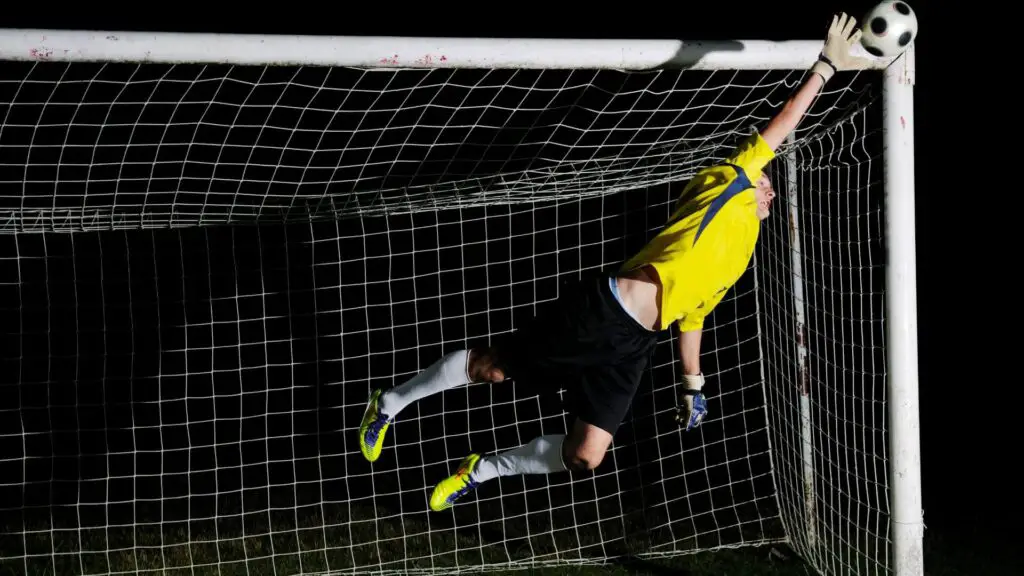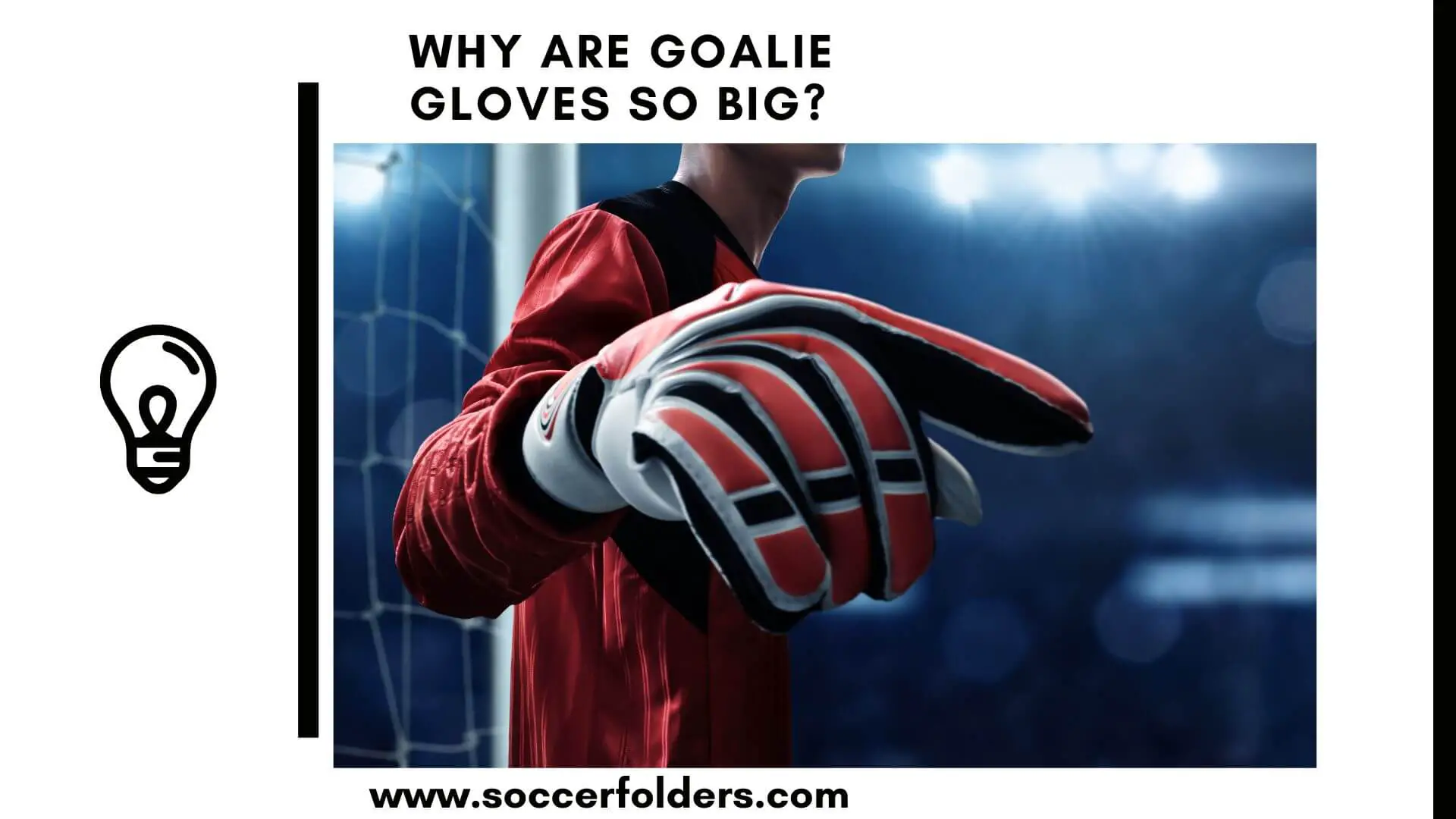When you think about hockey or soccer, one of the first things that might come to mind is the goalie, and specifically, the goalie’s gloves. Goalie gloves are an essential piece of equipment for any goalie, and they’re known for being incredibly large compared to other types of gloves.
But why are goalie gloves so big?
In this post, we’ll explore the reasons behind the size of goalie gloves and how they’ve evolved over time.
Let’s start.
Before we dive into the specifics of goalie gloves, let’s first talk about the role of a goalie in hockey or soccer.
Navigation
Role of Goalie in Soccer
The goalie is the last line of defense for their team, and their main job is to prevent the opposing team from scoring.
This means they need to be able to stop pucks or balls from entering the net, which can come at them from any angle and at any speed.
To do this, they need to have quick reflexes, good hand-eye coordination, and the right equipment.
Now, let’s talk about the gloves specifically.
Goalie gloves are designed to protect the goalie’s hands while allowing them to grip and control the puck or ball.
They’re made up of several different parts, including the palm, the cuff, the fingers, and the thumb.
The palm is usually made of a soft material like leather or synthetic leather, while the other parts are typically made of a thicker, more protective material like foam or plastic.
So, why are goalie gloves so big?
Why are Goalie Gloves so big?
- Maximum Coverage: Goalie gloves are large to provide maximum coverage of the net, making it easier for goalies to make saves on shots that might otherwise slip through their hands.
- Easier ball Control: The larger size of the glove makes it easier for goalies to control the ball, allowing them to trap it and move it around as needed.
- Protection: Goalie gloves are designed to protect the goalie’s hands from high-speed shots. The larger size of the glove provides greater coverage of the hand and wrist, helping to prevent injuries and bruises.
- Better Grip: Goalie gloves are made with specialized materials that provide a better grip on the stick. The larger size of the glove allows for more surface area to make contact with the stick, giving goalies more control over their movements.
- Evolution: Over time, goalie gloves have become larger as the game has evolved. As players have become faster and shots have become more powerful, goalies have needed larger gloves to keep up with the pace of the game and protect themselves from injury.
Today, goalie gloves are a highly specialized piece of equipment that’s designed to provide the maximum amount of protection and performance.
They’re often custom-fit to the goalie’s hand, and they can include advanced features like adjustable straps, ventilation systems, and specially designed pockets for catching the ball.
==>>You can also read: Are goalie gloves supposed to be tight?
What are Goalie Gloves made of?
Here are five common materials used to make goalie gloves:
- Leather: Many goalie gloves are made with leather, which is a durable and flexible material that provides good protection and grip.
- Synthetic Materials: Some goalie gloves are made with synthetic materials, such as nylon or polyester, which can be more lightweight and breathable than leather.
- Foam: Goalie gloves often contain foam padding to help protect the hand and fingers from high-speed shots.
- Plastic: Hard plastic inserts may be used in some goalie gloves to provide extra protection for the hand and wrist.
- Lining Materials: The inside of a goalie glove is typically lined with materials like nylon, polyester, or other synthetic fabrics, which can provide comfort and help wick away moisture.
==>>You can read the entire article I wrote about the materials used to make soccer goalie gloves here.
If you want to learn even more about the anatomy of soccer goalie gloves, Storelli did a good job on this article.
What makes a good Goalie Glove?

When it comes to finding a good goalie glove, there are several important factors to consider.
First and foremost, the glove should be comfortable and fit well, allowing the goalie to move their hand and wrist with ease. The glove should also provide ample protection from high-speed shots, with padding on the back of the hand and along the fingers.
In addition, a good goalie glove should offer a good balance between flexibility and stiffness. A too-stiff glove can make it difficult to make quick movements, while a too-flexible glove might not provide enough support for the hand and wrist.
The materials used to make the glove are also important. A good goalie glove should be made from high-quality materials that are durable and able to withstand the wear and tear of a long season.
Finally, the size and shape of the glove are also important factors to consider. While goalie gloves are generally large, there are variations in size and shape that can affect a goalie’s ability to make saves.
A good goalie glove should be designed to provide maximum coverage of the net while also allowing for easy puck control and movement.
==>>Read my article on how to choose soccer goalkeeper gloves here!
Final Thoughts
In conclusion, goalie gloves are so big for a few key reasons. They provide maximum coverage of the net, allow for an easier ball or ball control, and offer greater protection against high-speed shots.
While they may have started as simple padded gloves, goalie gloves have evolved to become an essential piece of equipment for any goalie looking to perform at their best.
Hope this article has enlightened you on why goalie gloves are so big.
Thanks for sticking around.
You can also read: How do you know if goalkeeper gloves are too small?

